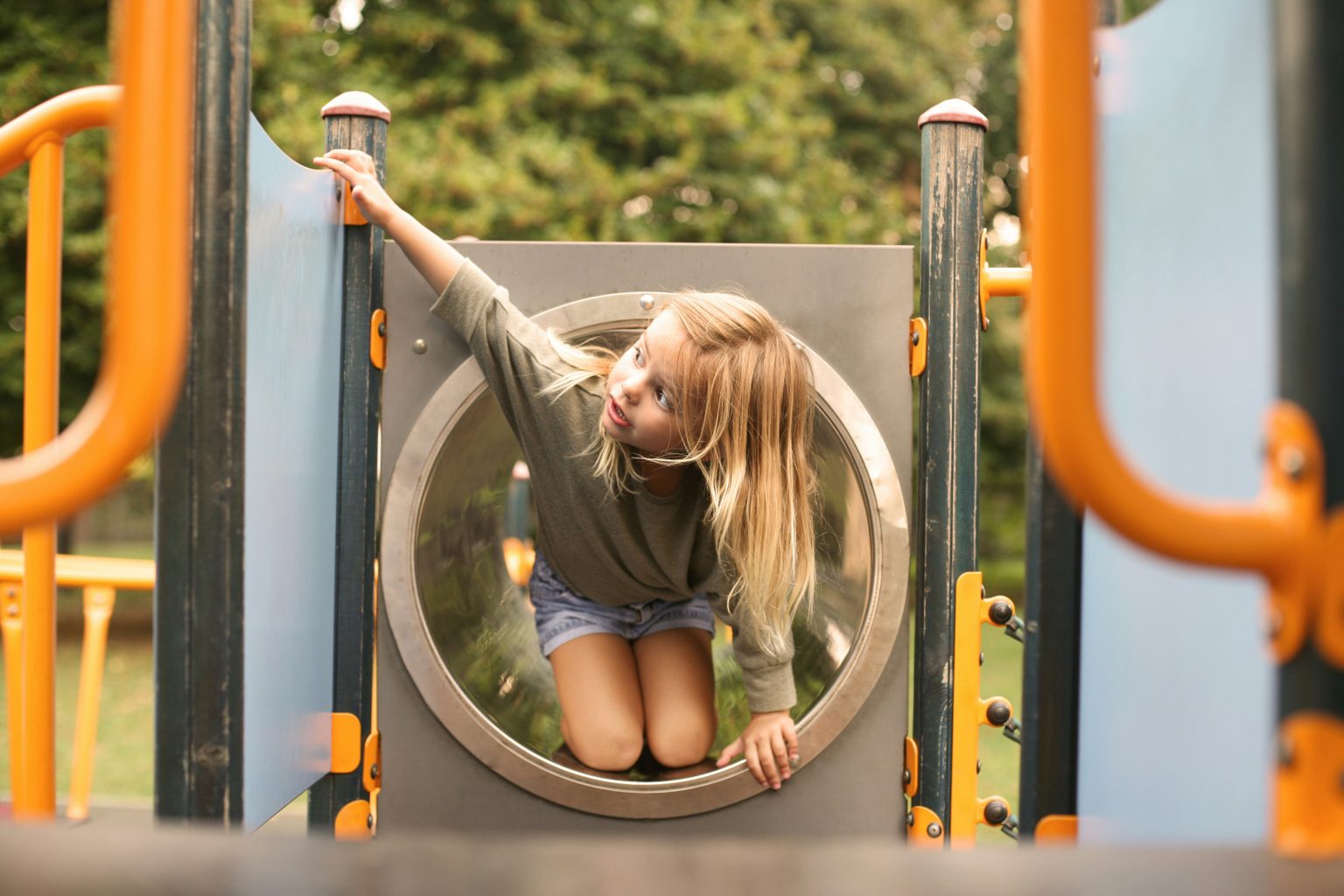Playgrounds are vital spaces for children’s physical, social, and emotional development. They provide opportunities for exercise, creativity, and interaction with peers. However, to fully reap these benefits, it’s crucial to prioritise safety. A well-designed and maintained playground can minimise the risk of injuries, allowing children to explore, learn, and grow in a secure environment. This comprehensive guide provides actionable steps you can take to ensure your playground is as safe as possible using providers like Image Playgrounds.
1. Regular Inspections: The Foundation of Playground Safety
Regular inspections are the cornerstone of any effective playground safety programme. Consistent and thorough inspections help identify potential hazards before they lead to accidents.
- Daily Visual Checks: Conduct a quick visual inspection of the playground equipment each day before children are allowed to play. Look for obvious hazards such as broken equipment, loose parts, sharp edges, and litter.
- Weekly Inspections: Perform a more detailed inspection of the playground equipment and surfacing each week. Use a checklist to ensure you cover all key areas.
- Monthly Inspections: Conduct a thorough inspection of the playground, including all equipment, surfacing, and surrounding areas. Document your findings and take action to address any hazards.
- Annual Inspections: Have your playground professionally inspected by a certified playground safety inspector. A professional inspection can identify hidden hazards and ensure compliance with relevant safety standards.
2. Surface Safety: Protecting Against Falls
Falls are the leading cause of playground injuries. Providing adequate safety surfacing is crucial for minimising the severity of falls.
- Appropriate Materials: Choose surfacing materials that meet recognised safety standards for impact attenuation. Acceptable materials include:
- Engineered Wood Fibre (EWF): A cost-effective and readily available option that provides good impact attenuation.
- Rubber Mulch: Offers excellent impact attenuation and is available in a variety of colours.
- Poured-in-Place Rubber: A seamless and durable surface that provides excellent impact attenuation.
- Rubber Tiles: Easy to install and maintain, rubber tiles offer good impact attenuation.
- Adequate Depth: Ensure that the surfacing material is deep enough to provide adequate protection for the height of the equipment. The required depth will vary depending on the material used and the fall height of the equipment.
- Proper Installation: Install the surfacing material according to the manufacturer’s instructions. Ensure that the surface is level and free from gaps or tripping hazards.
- Regular Maintenance: Regularly maintain the surfacing material to ensure that it remains in good condition. This includes raking EWF or rubber mulch to maintain its depth and repairing any damaged areas.
3. Equipment Safety: Identifying and Addressing Hazards
Regularly inspect playground equipment to identify and address any potential hazards.
- Check for Broken or Damaged Parts: Look for broken or damaged parts, such as cracked swings, loose bolts, and rusted metal.
- Inspect for Sharp Edges or Protrusions: Ensure that there are no sharp edges or protrusions that could cause cuts or scrapes.
- Verify Proper Spacing: Check that the spacing between moving parts, such as swings and slides, is adequate to prevent collisions.
- Inspect Handrails and Guardrails: Ensure that handrails and guardrails are securely attached and in good condition.
- Check for Entrapment Hazards: Look for any openings or spaces that could entrap a child’s head or limbs.
- Adhere to Safety Standards: Ensure that all playground equipment meets current safety standards, such as BS EN 1176.
- Consider Age Appropriateness: Ensure equipment is suitable for the age range of children using the playground.
4. Supervision: An Active Role in Preventing Accidents
While safe equipment and surfacing are crucial, active supervision is equally important for preventing accidents.
- Train Supervisors: Provide adequate training for playground supervisors on how to identify hazards, enforce rules, and respond to emergencies.
- Maintain Visibility: Ensure that supervisors have a clear view of the entire playground.
- Enforce Rules: Enforce playground rules consistently and fairly.
- Intervene Proactively: Intervene proactively to prevent unsafe behaviour, such as running on the equipment or pushing others.
- Be Attentive: Pay attention to children’s play and be alert to potential hazards.
- Teach Children About Safety: Educate children about playground safety rules and encourage them to report any hazards they see.
5. Playground Rules: Establishing Clear Expectations
Clear and concise playground rules help children understand what behaviour is expected and what is not allowed.
- Post Rules Prominently: Post playground rules in a prominent location where they can be easily seen and read.
- Keep Rules Simple: Keep the rules simple, clear, and easy to understand.
- Focus on Key Safety Issues: Focus on key safety issues, such as no running on the equipment, no pushing, and no climbing on fences.
- Enforce Rules Consistently: Enforce the rules consistently and fairly.
- Involve Children in Rule Creation: Involve children in the creation of playground rules to promote ownership and compliance.
6. Maintenance: Keeping the Playground in Top Condition
Regular maintenance is essential for keeping your playground safe and functional.
- Tighten Loose Bolts: Regularly tighten loose bolts and screws.
- Lubricate Moving Parts: Lubricate moving parts, such as swing hangers, to prevent wear and tear.
- Repair Damaged Equipment: Repair or replace damaged equipment promptly.
- Remove Graffiti: Remove graffiti promptly to prevent vandalism and maintain a positive image.
- Keep the Area Clean: Keep the playground area clean and free from litter.
- Address Drainage Issues: Ensure that the playground has adequate drainage to prevent water from pooling and creating slippery surfaces.
- Maintain Surfacing: Regularly rake and level loose-fill surfacing materials like wood chips and rubber mulch. Replenish materials as needed to maintain the proper depth.
7. Addressing Specific Hazards: From Entanglement to Entrapment
Be aware of specific playground hazards and take steps to mitigate them.
- Entanglement Hazards: Ensure that there are no ropes, cords, or other items that could become entangled around a child’s neck.
- Entrapment Hazards: Check for any openings or spaces that could entrap a child’s head or limbs. Openings should be either less than 3.5 inches or greater than 9 inches to prevent head entrapment.
- Sharp Edges: Regularly inspect for sharp edges on equipment and surfacing. Repair or replace any sharp edges that are found.
- Tripping Hazards: Keep the playground surface free from tripping hazards such as rocks, roots, and uneven surfaces.
- Weather-Related Hazards: In cold weather, be aware of ice and snow. In hot weather, ensure that the equipment does not become too hot to touch.
8. Accessibility: Ensuring Inclusive Play for All
A safe playground is also an accessible playground, welcoming children of all abilities.
- Ramps: Provide ramps to access elevated play structures.
- Accessible Surfacing: Use accessible surfacing materials, such as poured-in-place rubber, to allow children with mobility devices to navigate the playground easily.
- Adaptive Equipment: Incorporate adaptive equipment, such as swings with supportive seats, to allow children with disabilities to participate in play.
- Sensory Play Elements: Include sensory play elements, such as sand and water tables, to engage children with different sensory needs.
- Sufficient Space: Provide sufficient space for children with mobility devices to move around the playground freely.
9. Document Everything: Maintaining Records for Accountability
Keep detailed records of all inspections, maintenance, and repairs.
- Inspection Logs: Maintain detailed inspection logs that document the date, time, and findings of each inspection.
- Maintenance Records: Keep records of all maintenance and repairs performed on the playground equipment and surfacing.
- Incident Reports: Document any accidents or injuries that occur on the playground.
- Professional Inspection Reports: Retain copies of professional inspection reports.
- Review Records Regularly: Review your records regularly to identify trends and patterns that may indicate underlying safety issues.
10. Emergency Preparedness: Planning for the Unexpected
Develop an emergency plan to address potential accidents and injuries.
- First Aid Kit: Keep a well-stocked first aid kit readily available on the playground.
- Emergency Contact Information: Post emergency contact information, including phone numbers for local emergency services.
- CPR and First Aid Training: Ensure that playground supervisors are trained in CPR and first aid.
- Communication System: Establish a communication system for contacting emergency services.
- Accident Reporting Procedures: Develop clear procedures for reporting accidents and injuries.
Conclusion: A Commitment to Children’s Well-being
Ensuring playground safety is an ongoing commitment that requires vigilance, planning, and proactive action. By implementing the steps outlined in this guide, you can create a playground that is not only fun and engaging but also safe and secure for all children. Remember, a safe playground is a happy playground, where children can explore, learn, and grow without unnecessary risk of injury. Regularly reviewing and updating your safety practices will provide the safest environment for the children in your care. Prioritising safety is an investment in children’s well-being and development.



